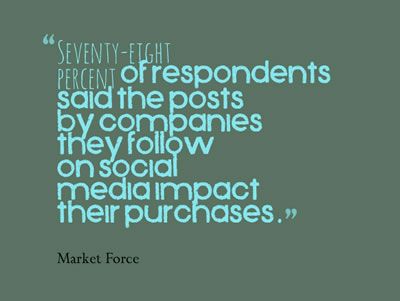Social Media Not Giving You the Return on Investment You Expected?
So, it’s a couple of months in with your new online marketing agency, and you’re not so sure about this social media “thing.” You’re looking at a report with fancy graphs and numbers, and terms that mean absolutely nothing to you. What are you paying for, anyway? Is it even POSSIBLE to determine the ROI of social media?
It sure is. Without going in to what the numbers mean and how to improve them, let’s look at some questions you might ask regarding possible reasons you’re not seeing the return you expected from social media.
Is it Too Soon?
Has it been less than six months since you started? Give it time. As long as you are seeing some action, keep it up. Don’t become a person who says, “I tried it and it didn’t work!” without giving it a chance.
Are You Expecting Too Much?
I know, it sounds like a cop-out, but, perhaps because social media has been touted by some “experts” as a sort of magic bullet, your expectations may have been too high. You may also be comparing it to other more traditional media (or trying to replace all your other marketing). This can lead to a problem when you are spending $2,000 a month on social media and $20,000 a month on PPC. You simply can’t expect the same results. The good news is that over time, your social investment will actually decrease the amount you need to spend on PPC.

What Are You Measuring?
The return on social investment cannot always be solely measured by direct traffic, or even by direct sales. One of the benefits of connecting with people on social is that, over time, it affects their purchasing behavior. In fact, 97% of people surveyed said that their purchasing decisions were impacted by an online experience. Seventy eight percent of respondents in a Market Force study said the posts by companies they follow on social media impact their purchases.
Social media can also be a great customer service platform. While this is more of a “soft” metric, you may see the number of returning customers increase as loyalty is built through superb customer service on social media.
It is impossible to capture the direct correlation of social media activity to purchasing, or even to website traffic. A fan or follower might have interacted with you on social for months before then going directly to your website to make a purchase. If nothing else changed (as in, you didn’t also double advertising or lower your prices considerably) when you started becoming social, however, you should be able to watch your sales slowly rise as you gain traction.
How Are You Measuring Your Return on Social Media?
Facebook Insights, Google Analytics, Twitter and Pinterest analysis can tell part of the story, but to really see the impact, you need to set up some of your own tracking devices.
A great way to track sales from social media is to use social-only discount codes or “blow-out” specials that are only shared on social media. When an order is placed or a service is scheduled, ask for that code, or keep track of how many “blow-out” items or services are purchased. Compare that to recent sales volume on that item. Did you know that 36.9% of Facebook users and 43.5% of Twitter users said they connect with brands using social media to stay in the loop on special offers? (source) Let’s give the people what they want!
Some businesses depend on phone inquiries to increase sales. Are you tracking calls that come right from social media sources? An easy way to do this is to get a virtual number. They’re not expensive, and often provide robust reporting to show how many calls came in, what the duration was, etc. We recommend Freedom Voice to our customers.
Are You Holding Up Your End of the Agreement?
Your contract with your marketing agency may have included a “(Your Company Name) Will:” section (ours do). These are included because social cannot be successful without a true partnership between company and marketing agency. Your lists of tasks may include items such as:
- Supplying social-only discount codes and specials.
- Sending email campaigns with encouragement to follow social profiles online.
- Adding social links to your website and email signatures. Especially if you are paying for AdWords or other online ads, you should make it easy for THOSE visitors to find you on social – this can even reduce how much you need to spend on ads over time.
- Encouraging staff members to interact on social in order to get things going.
- Sending images or videos for use on social.
- Allowing access to key personnel for updates and “behind-the-scenes” reports.
- Blogging regularly.
Have you done all that? If your agency isn’t asking for any of that, you can be sure they would still be happy to receive it and put it to use. Well, they should be, anyway!
Are You Using The Wrong Platforms?
A good look at your target audience, compared with the strengths and demographics of social media platforms should give you some idea of which social platforms will work best for you. If one in particular is not producing results, consider letting it go and spending that time and/or money on another platform. While analysis and proper planning are crucial, there is no substitute for real-world experience. So, if you’ve really given it your best try, move on to something else. There are many social media platforms specific to niches (cat-lovers, real estate, design) that might work better for you than the mainstream big guys.
Is Something Else Behind the Lack of Results?
If you’re getting good traffic from social media, but not seeing an increase in leads or sales, you should look at your website. You should also consider whether what is being posted on social media is fulfilled once a viewer clicks through to your website. For example, if you Facebook update promises “30% off today only!” but the link takes them to a page on the site where that discount is not prominently featured, there is a disconnect, and the visitor is going to leave!
If you’re not getting good traffic from social sources, again consider the platforms. Then look at the updates themselves. Do they reflect an understanding of your customers – their needs, challenges and interests? Try adding in a little humor and make sure you are blogging regularly and sharing those new posts.
Still at a loss? It is possible that you ventured in to social media before your business was ready. It may be time to go back and look at some of the fundamentals.
Your turn! How do you see that social media is working, or what made you decide it wasn’t?
Continue reading here: Online Marketing - Eight Ways to Spend Less and Get More
Was this article helpful?


